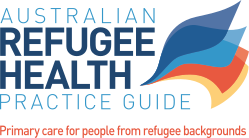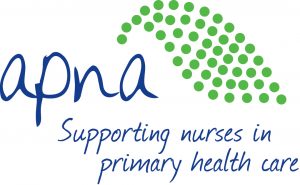
Hearing, Vision and Oral Health
Shanti Narayanasamy, Joanne Gardiner, Nadia Chaves
Recommendations
- A clinical assessment of hearing, visual acuity and dental health should be part of primary care health screening for all.
- Test visual acuity for each eye in all people. For people who do not speak English, test visual acuity with E Logmar chart. For children, use LEA symbols chart.
- Children may be referred to StEPS or similar programme, if available
- Refer all people of African descent >40 years and all others >50 years for ocular health checks for glaucoma.340
- Refer all for dental review.
Overview
People from refugee-like backgrounds may not have had an assessment of hearing, vision and oral health in their country of origin.
Hearing
An estimated 80% of people in the world with moderate to profound hearing impairment are from low and middle income countries (LMIC).341 Eighty per cent of hearing impairment worldwide is due to chronic suppurative otitis media (CSOM), and 90% of such cases are in the developing world.342 In Australia, rates of CSOM and cholesteatoma in the adult refugee population are much higher than that documented in broader Australian population.343
Vision
Low vision and blindness are recognised as one of the major public health problems worldwide. Eighty per cent of visual impairment, including blindness, is avoidable. Uncorrected refractive errors and cataract are the leading causes of visual impairment. Other causes of visual impairment include glaucoma, age-related macular degeneration, corneal opacities, diabetic retinopathy, childhood blindness, trachoma and onchocerciasis. Cataract, trachoma, onchocerciasis and glaucoma occur at increased rates in Sub-Saharan Africa and in the least developed countries.344
Oral health
Poor oral health is a significant public health issue and can cause long-term morbidity. Common oral health problems among people from refugee-like backgrounds include dental caries, missing teeth and peridontal disease; less common issues include orofacial trauma or oral cancers.345 Rates of dental caries vary from region of origin; however, a number of studies have reported much poorer oral health for some groups of newly arrived adults and children from refugee-like backgrounds compared to the general population.345–349
Oral health may be affected by a number of pre-arrival issues including low fluoride in the country of origin, low socioeconomic status, malnutrition, damage caused to teeth and gums by torture or trauma, and, poor access to dental care and oral health education.349 Post-arrival issues include low oral health literacy, the competing priorities of settlement, suboptimal understanding of dental service access, and the availability of low-cost sugar-rich food. Long waiting lists, costs of private dental service and suboptimal referral processes are also significant barriers to assessment and care. There may also be a discrepancy between self-reported and clinically determined need for dental care.349,350
Miswak, a traditional chewing stick, is a commonly used oral health product in the Middle East and Sub-Saharan Africa. The efficacy of such products has not yet been established, but the healthcare provider should be aware of the potential oral healthcare differences between cultures.351
History and Examination
Hearing
Ask the client if they have any concerns about their hearing or problems with their ears including chronic otitis media or discharge. Assess for a family history of deafness, and any exposure to extreme noise, including during conflict situations. Examine the external auditory canals and tympanic membranes. Further examination should be based on the client’s presenting symptoms. Hearing impairment may be a cause of, or contributor to learning difficulties.
Vision
Ask the client if they have any concerns about their vision or any other problems with their eyes. Check visual acuity for each eye, using an eye chart. The E Logmar Chart may be used for clients who cannot read English and the LEA Symbols Chart may be used for children.
Children rarely complain of low vision; therefore, all children should be assessed using StePs or a similar programme. Again, visual issues can contribute to learning problems in children and adolescents.
Refer all people of African descent >40 years and all others >50 years for ocular health checks for glaucoma.340 All people with diabetes require an eye examination. People from Pacific Island countries are at increased risk of diabetes.
Oral health
Ask the client if they have any concerns about their teeth and gums. Inspect the oral cavity with a good light, looking for dental caries, missing teeth, gum disease and other potential problems. Ask parents if children have difficulty sleeping or chewing hard foods, as this may be an indicator of chronic pain.
Management and Referral
Hearing
Refer children and adults with hearing concerns for audiology testing. Access to this will depend on state and territory legislation. Australian Hearing offer hearing checks and other services (see eligibility requirements).
Referral to an ENT surgeon or audiology service can be made through a public hospital.
Vision
Ensure adults at risk, (e.g. from Sub-Saharan Africa or Pacific Island countries), and all individuals with visual concerns have had their vision tested through referral to bulk billing optometrist. Spectacle prescriptions can be filled by a subsidised eyewear service. See the Vision Australia website for referral options.
Some states and territories provide subsidised optometry services and glasses for refugees and asylum seekers.
Oral health
Regardless of reported symptoms, refer all people from refugee-like backgrounds to a public dental service for review. Provide basic oral health promotion including informing clients of the importance of a healthy diet, twice daily brushing of teeth, flossing to prevent tooth decay, and regular dental review. Discuss the use of age-appropriate toothpaste (0–6 years) with brushing advice. There may be significant difficulties accessing dental services. Some states and territories currently identify people from a refugee-like background as a priority access group, allowing fee exemption and next available appointment for general and denture care.
Links
E Logmar and LEA symbols chart
https://www.good-lite.com/cw3/assets/product_full/500044_lg.png
https://www.good-lite.com/cw3/assets/product_full/250411_lg.png
Translated oral health resources
https://www.dhsv.org.au/professionals/health-promotion-resources/translated-materials




